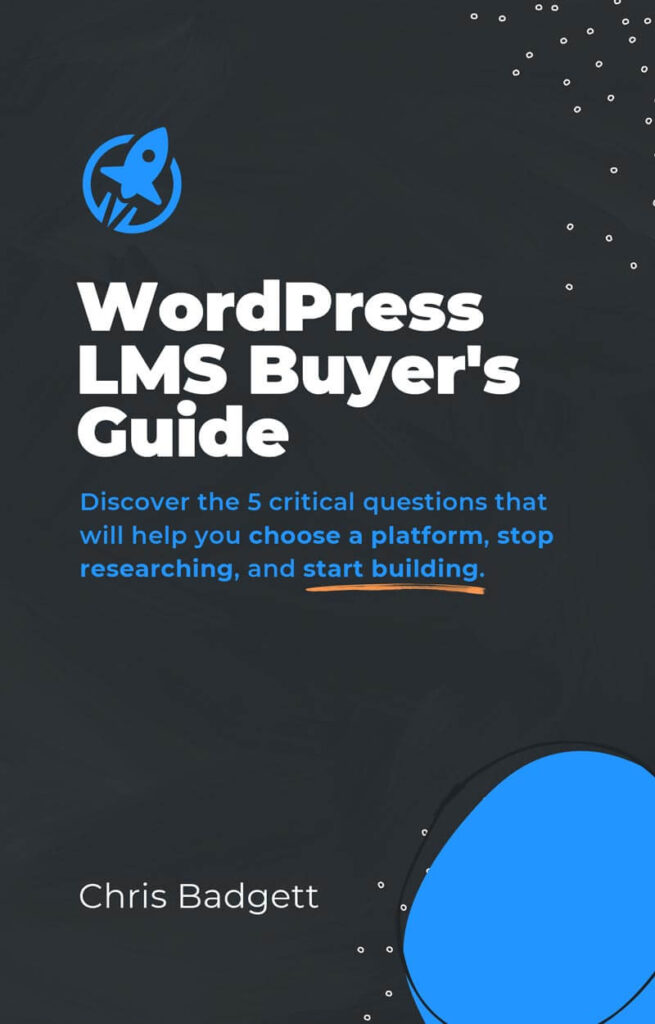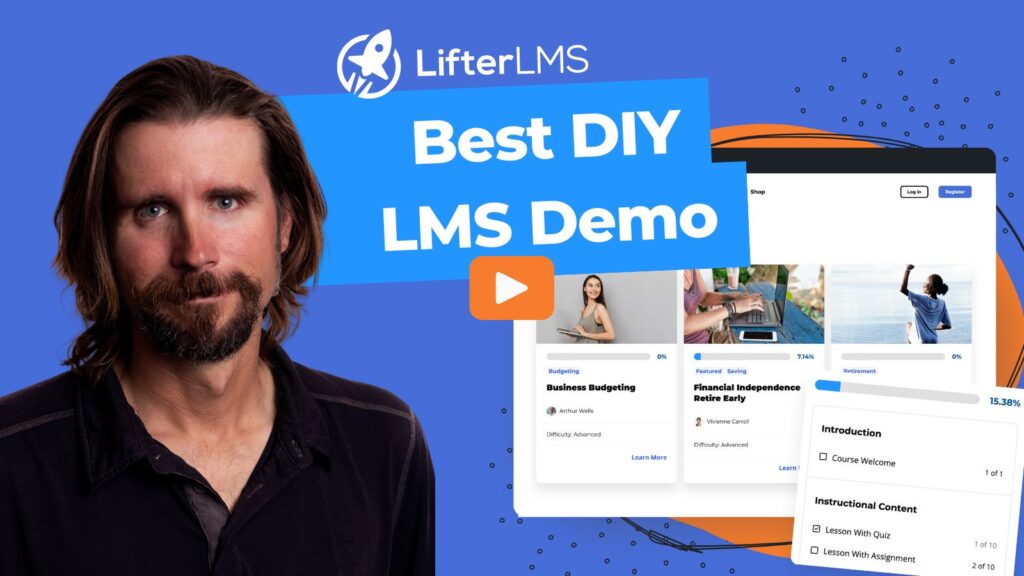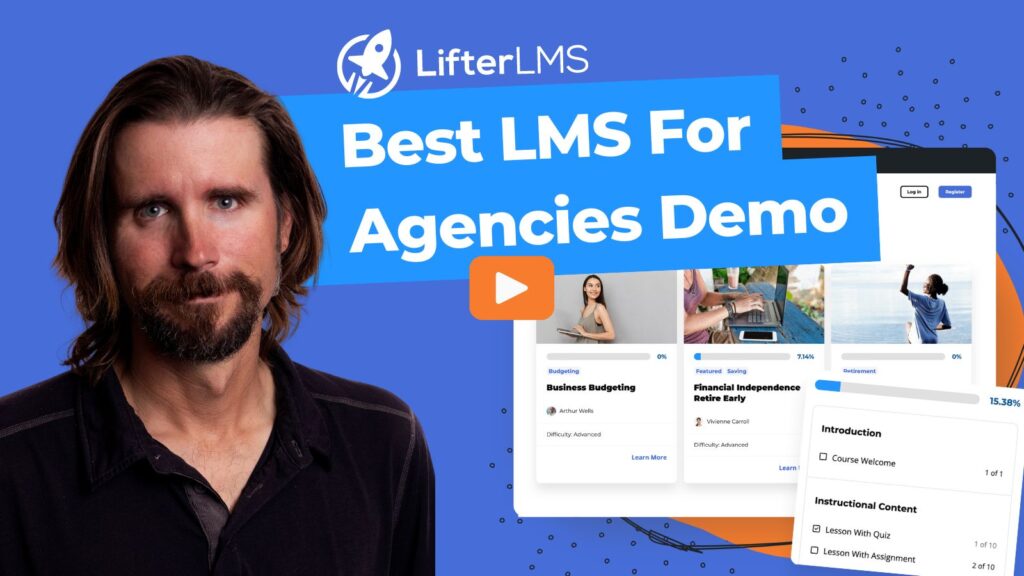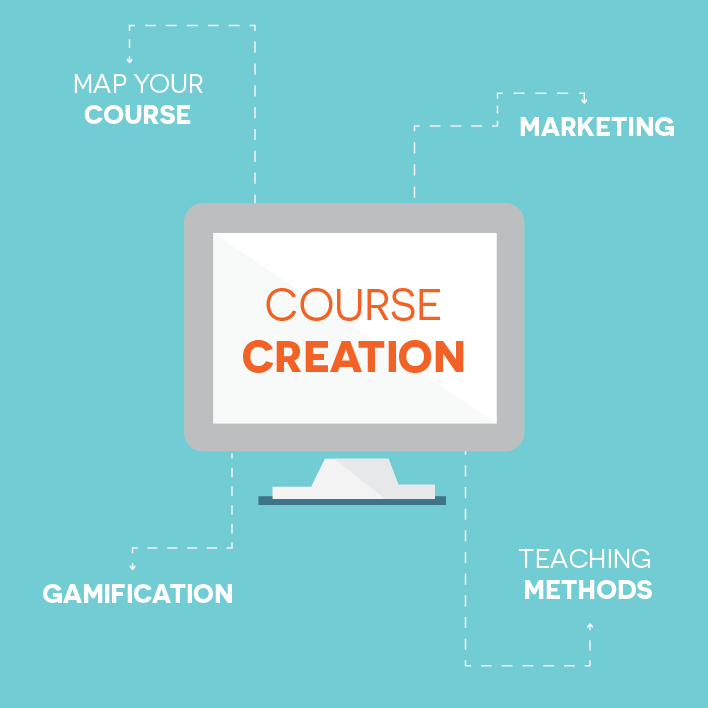 So you want to create an online course…
So you want to create an online course…
But the most logical problem is – where to start?
You may have a few ideas…
But how do you structure it in a way that works for your students?
How do you map it out into a great course curriculum?
- How do you get your thoughts in order?
- What information should you include?
- What should you leave out?
You already know that building an online course holds multiple benefits for the growth of your business
But it can be overwhelming to even start
Today we’re going to fix that…
Today you’re going to learn:
The EXACT 5 Step-By-Step Framework You Can Use To Plan And Structure Your Information Into A Kick-Ass Course
It’s not always easy to organize your knowledge into a smooth flowing curriculum…
So why can some people create life-changing courses with relative ease?
It’s surprisingly simple:
They follow a proven step-by-step process
This means no second guessing, less overwhelm and it’s much more efficient!
(And results in better course delivery)
But that’s not the best part:
This guide will help you to understand and map out all the information in your head, so you can
get organized, plan and start creating your course as soon as possible!
Keep reading to learn more…
The Course Planning Primer: The 5 Fundamental Stages To Mapping A Successful Course In 24 Hours
The key to planning a successful course is this:
Simply follow the 5-steps below before you start your course production
I know it’s always tempting to dive in and start creating, but with a concrete plan it’s FAR easier
(And way less stressful…)
That’s right:
Just 5 simple steps are all that’s needed to get started on your course right now
We’ve seen course builders veer right off track, lose momentum and lower completion rates by not planning properly…
But working from a structured outline will make the development process much easier for you
The 5 Steps to the Course Planning Primer:
- Have a specific start point and a deliverable end goal for your student
- Mind-map all content you know in advance
- Separate it into the core elements you want to teach and that are relevant
- Organize it into a logical order for the student to learn
- Deliver it in sections that won’t overwhelm and can help them understand
Seems obvious and almost too simple right?
That’s because it really is
Success comes from simple systems
We can all be guilty of over-complicating things…
…And over-thinking can lead to procrastination 🙁
Don’t believe me?
Have you ever taken a University finals exam?
You can bet your room suddenly needs a tidy before you start!
But by following the process below you will be working WITH your brain, not against it
helping to batch and sort jumbled thoughts into a functioning curriculum for your students
Important Note:
It’s important to realize your course will never be “finished”
It will always need updating, improving and refining
Once it’s released, you’ll be receiving continuous feedback on how to improve
“Done, not perfect” is the goal here for the planning stage
So let’s dive into each step, and how you can use them immediately after reading this guide
Step #1: Have A Specific And Deliverable End Goal (And Know Your Start Point) 
It can be difficult to know where to start…
However, we can make it easier for ourselves by asking:
What is the base level of knowledge of my students?
Are they beginners, intermediate or advanced?
Then, we can ask:
What the end goal for your course? What will they achieve?
A sure fire way to get organized is to understand both your start point and end goal
If you understand these points, then it’s faaaar easier to plan out the other areas
Think of this like a road-map between locations – from points A to Z
By setting a clear definable goal, your course planning will be MUCH easier…
And so will your marketing…
For Example:
Imagine you are creating a course to teach French called:
“Conversational French For Francophiles”
You may do your market research and note that your students may have studied French at school, but have forgotten most of what they learned in adulthood
Therefore we need to assume they are complete beginners and start slowly
Next,
if your course is about learning conversational French, your one outcome could be:
“By the end of this course, students will be able to have a continuous 5 minute conversation with a local”
By knowing the end goal it’s now far easier to know what to include and what to leave out
A huge learning curve for new course creators is to want to include everything you know under the sun
But the thing is, this is actually a disservice to your students…
Why?
Your students buy your course because they want a specific outcome
They want to fast track results as quickly as possible
But by adding everything you know they’ll actually quit waaay before they finish
Before they actually achieve anything…
Taking our ‘learn French’ example
your students won’t need every single French verb ever…
they just need the key verbs for conversation
If you feel let down because you have more information to give there’s a solution:
Simply cut the more advanced sections out and create an ‘advanced course’ as a bonus or as a follow up for release later
But how do you know what your students want?
An easy way to find out is to:
Go and speak to your ideal customer – and just ask them what they want to achieve
Ask:
- Where will they use the language?
- What context?
- What do they want to be able to do at the end?
“As you interact with your audience, take notes about the most common problems and questions” ~ Danny Iny (Mirasee.com)
They may say they want to be “Fluent in French…”
However… there could be underlying reasons for wanting to learn
And it’s your job to find out what they are
Continue to ask a few more questions…
Don’t worry if it feels awkward, we just want to delve a little deeper
You see, when you ask someone a question, they often give you the answer they think you want to hear…
And it’s not the real reason
If you wait and let them chat away, you may find a deeper meaning for why they’d like to learn French
(In reality they could want to talk to French girls!)
So they need ‘Conversationalist French‘ instead of ‘being fluent’
(And maybe some tips on asking people out to a restaurant…)
By understanding their goals you’ll also learn how to position and market your course later
Andrew Warner, founder of Mixergy.com has this to say about asking your customers what they want
(and why it’s so important):
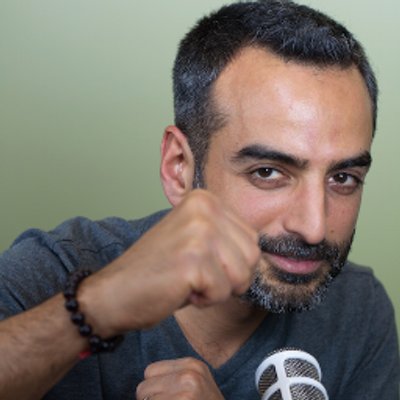 “After I recorded my 1,000th interview, I decided to create a course on how to build an interview-based business.
“After I recorded my 1,000th interview, I decided to create a course on how to build an interview-based business.
From the questions I read online, I assumed the biggest issue people had was figuring out how to record. You know, the right mic, software, etc.
When I checked with my audience, they told me that they know that stuff, or could Google it, but what they were really struggling with is how to make an interview interesting.
Until I asked them, I forgot how story structure and finding the right questions used to be tough for me. So I added a whole module to my course on structure. It’s one of the biggest reasons people ended up buying my course.”
BONUS Copywriting Secret:
We can also pay attention to the words your interviewees are using…
Just jot them down for now
Then add them to your copy and sales pages later
You’ll be speaking their language and will relate to their goals…
Action steps:
- Email 5 potential customers
- Get them on Skype
- Find out what they want to know
- Find out why they actually want to learn
Remember to keep asking and find the real reason they’d like to learn
Here’s an easy template to use:
“Hey (THEIR NAME)
I remember you always asking me about wanting to learn French and if I could teach you,
are you still interested in learning?
I know not everyone can afford 1 on 1 training so I’m trying to put together a training course people can take online.
It would be a HUUUUGE help to me to ask you 5 questions and treat you to a coffee at the same time?
Would you be able to give me your feedback?
You rock.
(YOUR NAME)
Send it out to a few people who you know could be your ideal student
You’ve now started the market research for your course!
And the best part?
These people will be incredibly interested in taking your course by the end of it
- You could set up practice modules with them
- And perhaps pre-sell the course to them now and use them to beta test different modules before it goes live.
That’s right…
You could already be making money from the course and have participants to test different methods with….
Research isn’t all that bad!
Step #2: Mind Map Your Content (And Free Up Some “Brain Juice”)
It’s easy for your knowledge to become a jumble of thoughts in your head…
You know what you could teach but it blends into half formed ideas and images
Constantly thinking about fragmented thoughts can be mentally draining, leaving little time and energy for any sort of organization
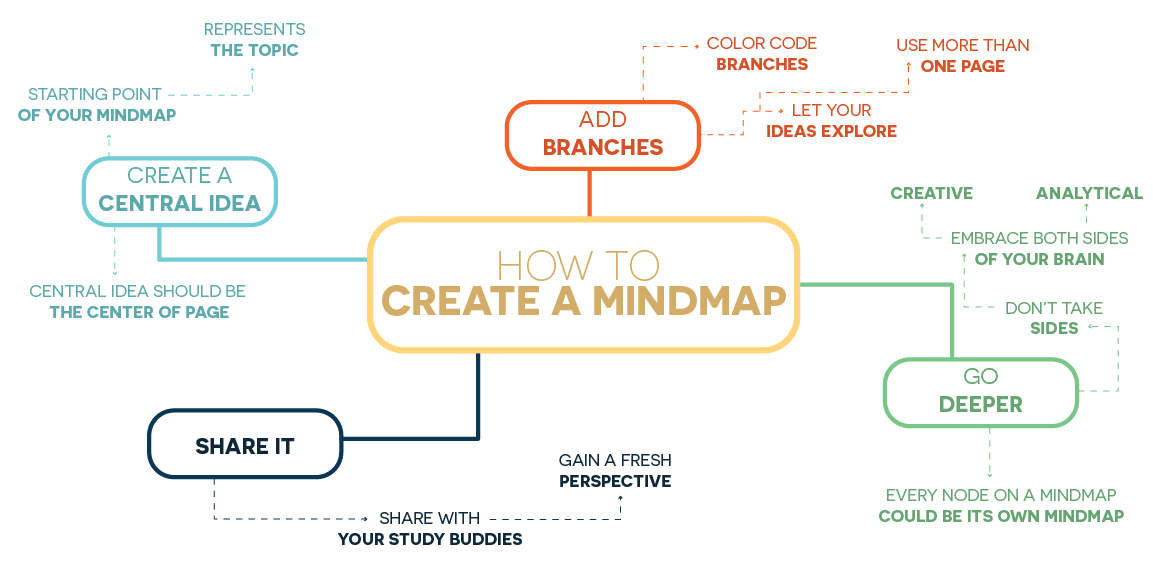
THIS IS OKAY
You’re not bad at this – it’s a process many content creators go through
(It’s why authors have editors proofread their books)
Now that you know where you are leading your students, it’s much easier to map out key markers on their learning journey
(As in our example to teach French)
The next step is to take all the information you know relevant to Step 1 (your student’s goal) …and just brain dump it onto a nice big sheet of paper
- Don’t worry about how nice it looks for now
- Don’t try and organize it-just get it all out there so you don’t have to keep thinking about it
Just have a good ol’ mental ‘clean up’ and get it onto paper
Just get your thoughts out onto paper for now
NOTE:
This ‘brain dumping’ is the favored process of New York Times bestselling author Tim Ferriss as a way to feel lighter and more organized through visualization
Just take half an hour to get down the main points of EVERYTHING you feel would be relevant to your students and their end goal…
Put yourself in their shoes
What would they need to know to reach your goal?
The aim of this exercise is to free your brain of ‘bits’ of information so you can better communicate your key points with students
Include things like:
- Questions that come up
- Sources of information
- Where a student would start
- What they would need to do to reach the intended outcome
Don’t worry if it’s a mess, or it doesn’t make sense at the moment
This mind-map aims to do a few things:
- It’s a pretty great representation of everything you know on a subject
- It will give you confidence that you know your subject matter like a pro, helping banish doubts of feeling like a fraud. (A common feeling to experience whilst educating)
- Helps to jog creativity and inspire your thought process
- Gives a bird’s-eye map for what include and what to leave out
Organizational Toolkit (recommended by the team at Lifter LMS)
- Workflowy.com – Hierarchical tools like Workflowy.com are free (to a point) and work really well to you batch thoughts
- Evernote is a freemium app designed especially for archiving, note-taking and organization
- WordPress is a powerful tool for managing content and will also host your learning management system
- Google Docs are a great place to start with your course organization, especially if there are others involved in creating your course)
- Old fashioned Pen and paper! (my favorite)
(Find our complete tool kit + our 5 top recommended tools for building online courses here)
Don’t overthink this…
Just start writing everything down that you think they would need
French Course Example:
Conversational French
What’s needed?
- How to say hello
- How to ask about the other person
- How to talk about your day
- How to talk about topical events
- How to organize other meetings
- How to flirt?
- How to say goodbye
And it’s as simple as that
So now you’ve given yourself some ‘breathing space’ you’re free to focus on getting the core elements into a structure…
Step 3: Separate the core course elements (cut out the ‘fluff’)
Now you have all that information in your mind-map, and the end goal in sight, it’s time to batch your knowledge into a basic curriculum outline
Going back to your end goal (step #1) get a fresh piece of paper (or start a new document) and begin to pull key information from your mind map
Only include the key things your students will need to get to that goal.

Remember:
- Just what they need to get them to that point as fast as possible
- Not everything on the subject
- Not so much they get overwhelmed
You may be fluent in French, and know all 100,000 words in the French dictionary…
But your level of skill is not in question here
It’s about getting your student to that specific goal ONLY!
(They already believe in your awesome French skills that’s why they took the course!)
Without meaning to you may have already listed the core modules by accident during your ‘brain dump’
If you look closely, that’s what we did with our French example!
Do they need to learn 3 variations of the same verb now?
Or will this stop them from ever practicing?
It’s important to break down and simplify as much as possible
(If you do find you have more stuff to add, simply batch it into those sections that make sense-we’ll continue to refine as we go along)
For Example:
Linguists have identified only 300 words needed in daily conversation…
Even newspapers rarely go into much deeper vocabulary
So in our French example whole word groups can be discarded to make way for JUST the key points:
- Do you need to teach all of this?
- Will they ever use it?
Again, don’t worry if this looks a little rudimentary … we’re helping our brain to sort through what is useful and what is just ‘fluff’
As we take a look at our mind-map we’ll also start to notice other common ‘threads’ or trains of thought…
If you look at our previous French Example we even put the modules into a logical order of teaching
- How to say hello
- How to ask about the other person
- How to talk about your day
- How to talk about topical events
- How to organize other meetings
- How to hold a full 5 minute conversation with a local
- How to say goodbye
And as if by magic you now have a very basic outline to your course…
Step #4: Organize Modules Into A Logical Order (and give your course a structure that makes sense for your topic)
Now it’s time to take your student on their journey…
We’ll start to organize each module into a logical path, guiding students toward their end goal
If we can structure our course in a way that makes sense (a logical flow) it can help students to visualize and stay on track, raising completion rates
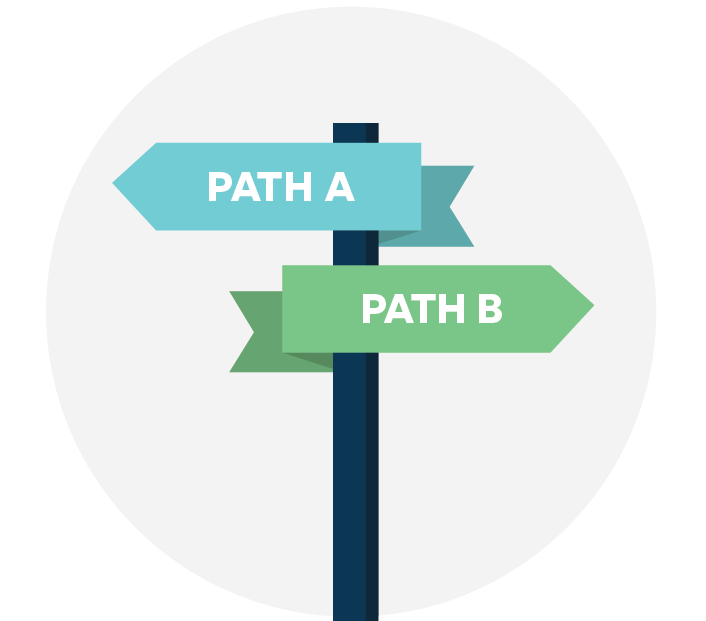
(We created this actionable step-by-step guide to organizing your course into a structure that makes sense for your subject material HERE)
NOTE:
If we open our course with a ‘quick win’, we can create momentum for our students as they move through content
In our ‘Learn French’ example, our first lesson could look a little like this:
Module 1- Getting Started
Lesson 1 – Think you can’t speak French?
“You may think you can’t speak French at all and it’s going to be really hard to learn…
but it’s estimated that around 70% of the words used in the English language are similar to the French equivalent words!
Here’s a list of 50:
….
Congratulations, you now have over 50 words in your French vocabulary!
Did you also know that to have a conversation in French with a local, you only need to know around 300 words?
Yep-you’re already nearly 20% through what you need to speak French
How awesome is that!?
So students will know a few things right off the bat, have an idea of what they will learn and feel great already!
After that it’s just a matter of moving them through a logical path towards the end goal
BONUS TIP:
If you are a little stuck on creating lesson structure, you could do EXACTLY what we did here to teach you The Course Planning Primer:
- Talk about the goal or idea
- Give an example of how it works
- Explain how to do it
- Give a template to take action on
You’ll now you have your course information laid out and the modules in order…
The next step is to:
Step #5: Deliver your course in lessons that won’t overwhelm
So far, we have:
- A start point
- An end goal
- A logical order for modules
You have a path for them from A to B
And perhaps you’ve been heartbroken as you cut sections of the course out to make it punchier…
Sorry…
You’ve got to do it again…
Like anything, you will improve as you tweak and hone
Go through your content again and make sure you’re not including too much in each module
Even if it means adding 2 more modules to the course so you can break down the lessons further
You see, by giving too much information you can seriously overwhelm and stop students from retaining information
(In fact we can make the learning process a little easier by making our course a little more interactive, which we talk about here)
We sometimes get the question: how long do my lessons need to be?
It really depends on what your learning cycles are, however many recommend 15 – 20 minutes per lesson
We asked 17 thought leaders what the biggest mistake people make when building their online course is
Here’s what Terry Lin (founder and co-host of Build My Online Store) has to say:

“In my view the #1 mistake is creating modules that are too long, i.e. over 15 minutes. Anything longer than that and I believe you start to lose the attention and focus of the customer. As a content creator you want to pack as much value as possible, but total time isn’t the best indicator of that – especially in this day and age with so many distractions.”
Keep your students moving through your curriculum by providing short and ‘digestible’ lessons”
Once you have all your modules and lessons down, you can start to map them into your LMS (learning management system) and start to organize your course production.
In Conclusion
You now have the EXACT 5 Step Course Planning Primer Framework to start planning your course
Don’t give into procrastination by cleaning your room or making it more difficult than it needs to be
Your sole responsibility is to get your best course out there to your students-nothing more, nothing less
A note on energy…
A great plan will maintain high energy in your course production
Online courses offer you a unique opportunity to present at your best in every lesson
Poor planning will end in a weak presentation
Your energy will directly affect your students’ engagement and interest, determine course retention and completion rates
Stay focused, organized and give it your best shot!
Let us know in the comments if we can help answer any questions about planning your course…
we’re here to help!


